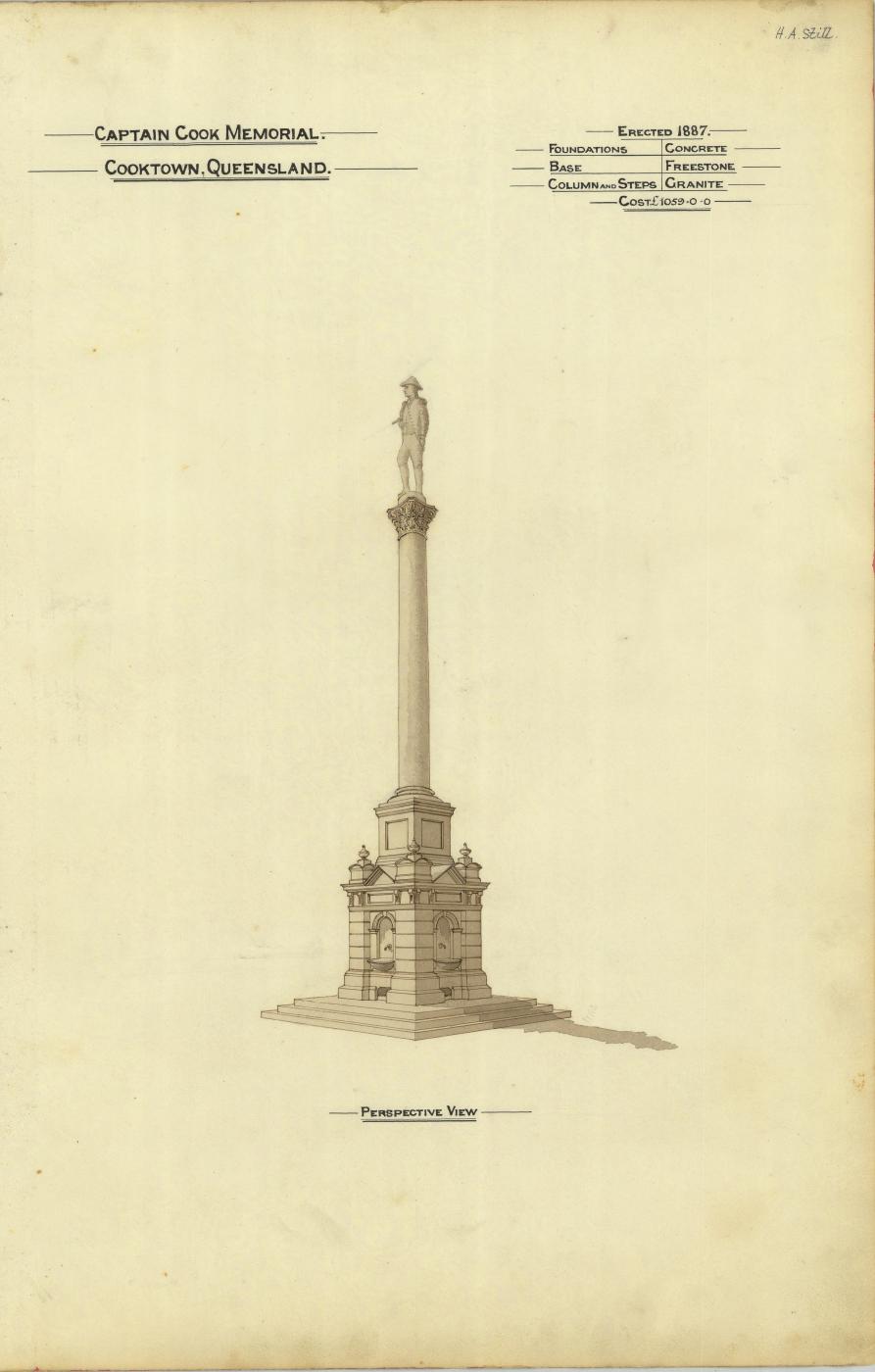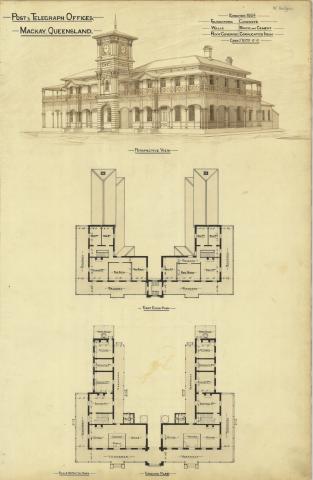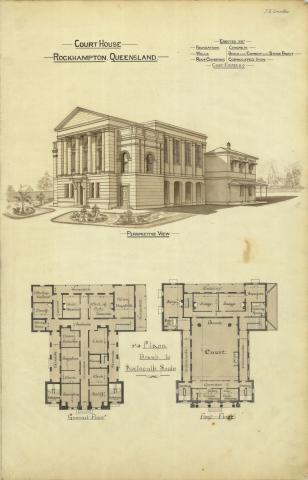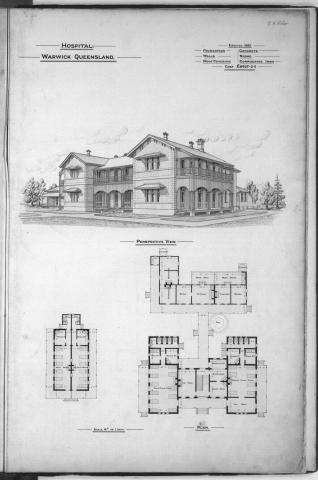
- News of the day
-
Cairns Post, Tuesday 3 October 1933 p 3
Captain Cook and Cooktown
(By Nancy Francis.)
The one place in Australia sacred to Captain James. Cook, is without doubt the little town situated at the mouth of the Endeavor River, and called after him--Cooktown.
The town came into being as the direct result of the finding of the Palmer goldfield about the year 1873, just 103 years after Cook's ship, the Endeavor, had been brought there; shattered, and on its shore made whole and seaworthy again. The influence of the great captain was acknowledged immediately, by the gold seekers in naming the town And Cooktown should be still acknowledged as the shrine of the-man who found Australia for the English; and should be the place of pilgrimage for those true Australians who revere the discoverer, and value the history of the new nation.
There is in Cooktown a tall memorial set up as a tribute to the landing of Captain Cook, and until several years ago there was preserved in the School of Arts a piece of blackened and ancient log, to which it was said the Endeavor had been tied up. And probably there are other relics of the landing which would reward a diligent search. The School of Arts is no more, the excellent library it contained is scattered. The writer has been told that the old log has been removed to the State School. It would be well if its present situation were verified. In any case the disturbing of such an invaluable relic and its possible removal is to be regretted. A museum in Cooktown itself of Cook relics, and of all local data concerning the cottage that is being removed from Great Ayton, Yorkshire, in which the heroic commander spent part of his childhood, should be re-erected at Cooktown.
Of course it is asking too much of the South, and however reasonable and just, such a proposal would not be regarded. But, consider--the Endeavor, on Captain Cook's first voyage round the world, arrived at Botany Bay (five miles south of Sydney) on April 22, 1770, and sailed northward on May 6, having spent I5 days there. They found the natives shy and unapproachable, and could not manage to have any intercourse with them. They sailed up the coast, sounding night and day, for the coast was treacherous and absolutely unmarked. Here and there they landed for game and fresh water, and we still trace the good ship by the names given by the commander to bay and point and cape. On May 13 Cape Smokey was passed, on the 15th Cape Byron, Mt. Warning and Pt. Danger marked treacherous shoals; there were heavy breakers at Pt. Lookout Moreton's Bay, Cape Moreton and the Glass Houses, were passed and named, and Indian Head, Sandy Pt., Break Sea Spit, Hervey's Bay were left behind. At Bustard Bay they landed and found 'Hammer' oysters. Also they first came in contact with green ants and hairy caterpillars. Cape Capricorn, Cape Manifold, and many islands were passed to Thirsty Sound, where they landed, but found neither fish, fowl nor fresh water, and where they heard voices, but saw no one. On June 1 they left this inhospitable spot and sailed past Cape Palmerston, The Bay of Inlets, Cape Hillsborough and Cape Conway. They navigated Whitsunday Passage, and on the 6th they reached and named Cleveland Bay and Magnetic Island.
Now the adventurers are in the true North. Across Halifax Bay they stood on the 8th, and at evening were abreast a point of land they named Cape Sandwich. Across Rockingham Bay, the north point - of which is formed by Dunk Island, they passed, and on June 9 they were abreast the Franklin Isles. It took the great Englishman seven weeks, all but a day, to arrive at this point, from the date of his first landing at Botany Bay. With the -exception of the 15 days spent at Botany Bay, the Endeavor had come up the coast without anchoring except for a very few days and hours. It was off Trinity Bay, on June 10, that the history of the voyage began to partake of tragedy.
Battered and sea worn, only just not a wreck, the gallant ship was humored along. She had been beaten on the rocks and smashed. She leaked, and constant pumping was added to the constant sounding. It was June 18 when the Endeavor was beached, and tents and a forge set up so that the carpenters could set about their repairing. And the spot was the mouth of the Endeavor River, at Cooktown.
Here the Endeavor lay for 47 days, until August 4, and for this period of nearly seven weeks her commander and his officers were engaged in examining the country. They spent more time here than at any other spot in Australia. Botany Bay kept them for 1S days, the Endeavor for 47 days! From Trinity Bay to the Endeavor River is Captain Cook's own country. Every little bay, each island, each point or cape were regarded by him with the most poignant anxiety. The journey between those two places was one which called for every atom of resource, for the utmost bravery, and, above all, for faith. The officers and crew looked to that great man, their captain; from him they drew their own confidence; through him they brought their ship at last to the safe harbor where she could be repaired.
And after such a voyage into the unknown and the anxiety of bringing the-crippled ship into harbor, imagine the relief, the comfort of those weeks onshore. With what joy would the sick and weary men look on the green hills; how the fresh food, the fish, the pigeons and the ducks would revive their appetites, sickened by the ship board fare that in those days was (even in the ship commanded by Captain Cook, who was a generous and humble man) inadequate and poor. The fresh cold water, the sweet breezes--the place must have-been heaven to those weary voyagers.
Here they first made friends with the aborigines. Here they made excursions into the country, made minute observations, discovered many things hitherto unknown, and saw their first kangaroo. The history of those days is full of interest. Here they renewed health and hope, and here their wonderful ship was made seaworthy again after all her battling.
In his subsequent voyages, until his untimely death, it is reasonable to suppose that the great Captain always held in his heart a kind thought for the Endeavor River, the spot where he rested before sailing for the end of the peninsula and for New Guinea.
And therefore Cooktown is his own place, sacred to his memory, and should be preserved as a shrine to him.
It has been said that we have no history in the North, nothing to show the traveller or tourist. Let us show them the journey of Captain Cook from Trinity Bay to the Endeavor River. Let us revive the epic of that momentous voyage-from Botany Bay if you like--but it is from Cairns to Cooktown that the drama becomes intensified, and at Cooktown that the climax is reached.
- Background
-
The Captain Cook monument, erected 107 years after James Cook`s landing at the Endeavour River, is historically significant as an early memorial commemorating the landing site. Cooktown was the only place in Australia other than Botany Bay where Cook`s party came ashore for any length of time during the momentous 1770 voyage.
The Captain Cook Monument comprises a tall, slender sandstone column, topped with a detailed capital, which rises from a square pedestal resting upon a granite base and plinth. The steps of the plinth lead to a square dado incorporating drinking fountains on each side. Being in a prominent location near the original site of Cook`s landing, the monument has landscape significance.
These fountains were once linked to a regular water supply [possibly an internal tank], and the water outlets emerge from the mouths of sculpted animal heads. The dado is set beneath a modest entablature and the pediment is flanked by sandstone urns at each corner.
Courtesy of Monument Australia



